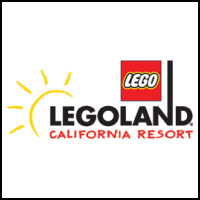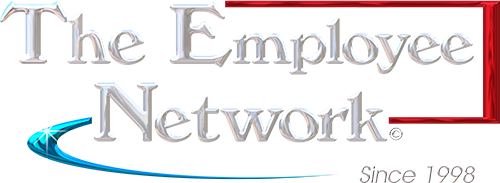The most important thing to remember when you are staffing a trade show booth is that you represent your company. Everything you do and say, even if it is not in the booth, reflects upon your company. You are an ambassador, and your behavior should be above reproach. Your attire and hygiene should be clean, neat, and professional. A trade show is not a vacation, even when it’s in a FUN place like Las Vegas or New Orleans. Remember that you are on a business outing. Booth duty is hard, tiring work, and you will need to pace yourself in order to have energy on the day of the event. The following are recommended behaviors for company staff working a booth.
Road Show Tips

Following are 10 examples of things you should do while hosting a trade show exhibit:
- Prepare 3-6 engaging questions before the event.
- Create the right first impression
- Encourage visitors to want to spend time at your booth.
- Be friendly and non-threatening
- Build rapport
- Ask questions that stimulate thought and encourage conversation
- Ask open-ended questions – beginning with who, what, where, when, why and how
- Relate questions to your industry, product/services and its benefits, or to a specific situation
- Avoid questions, such as: “Can I help you? ; “How are you doing today?” ; “Are you enjoying the event?”
- Practice, practice, practice

Following are 10 examples of things you should NEVER do while hosting a trade show exhibit.
- Sit, read, smoke, eat or drink in the booth
- Ignore prospects by forming a cozy cluster and chatting with colleagues
- Be late to booth duty
- Close off conversation by crossing arms
- Stand with your back to the aisle
- Lean on booth furniture
- Drink alcohol or eat garlicky or spicy foods during the day
- Use inappropriate language, complain about the event or about being at the event
- Badmouth your competitors
- Let the booth get cluttered, untidy and unorganized. Be unprofessional
SMILE at your customers.
This may sound like I’m stating the obvious, but you would be surprised at how many booth staffers I have seen looking bored, tired, and generally unapproachable. You must look alert, helpful and interested, so the booth visitor will feel comfortable approaching you.
Watch you body language.
Folding your arms in front of you is a “closed” body position that appears to say to the customer, “don’t bother me”. Leaning on counters should be avoided too, as it makes you look bored or tired. Stand up straight, look your customer in the eye, and keep your arms relaxed.
Always stand facing the aisles.
That way you can see when a customer is approaching the booth. If you keep your back to the aisle, you look like you are sending a message to the customer that says, “I’m busy”, or “not interested”.
Greet customers at the edge of the booth
rather than in the center of the booth. This helps you draw them into the booth. If you can engage them in a conversation, you stand a better chance of getting them to stop, enter your booth, and learn about your product. If you stand in the middle of the booth, they may not be motivated to enter.
Never eat or drink in the booth
(except water). Eating in the booth looks tacky, makes the booth smell bad, and can often make a mess. It is totally unprofessional. Even coffee should be avoided, as it is easily spilled and can ruin equipment, clothing and/or your rug. Having a water cooler in your booth is a good idea, as it gives customers a reason to enter your booth and hang out for a few minutes. Be sure to keep the water cooler well within your booth, so the customer will have to come into the booth to get a drink.
Dress professionally,
either in booth “uniform” or business attire. A business suit is always the best solution. But many companies now use “booth uniforms” that usually consist of a nice polo shirt, or long-sleeve shirt emblazoned with the company logo, and semi-causal Docker-type slacks and comfortable shoes. Either solution is acceptable. Mini skirts, shorts, jeans, sneakers, leggings, sandals, tank tops, or high boots are not.
Do not “customize” your booth uniform
by cutting, tying, or trimming. Believe it or not, I have seen booth staffers cut off the bottom of their company shirt, tear out the sleeves, tied the shirt in a knot to expose their mid-section, and “pegged” the pants so that they were skin-tight. The point of a booth uniform is to present a consistent, PROFESSIONAL image to the customer. When you have your company name plastered on you, you are a walking billboard for the company, and you need to act accordingly. Exposing too much flesh or appearing raggedy or tacky and unacceptable.
Do not chew gum in the booth.
It looks tacky.
Don’t stand in groups,
talking to each other. Groups of company staffers talking together sends several bad messages: too many staffers assigned to the booth at one time; not enough booth traffic; you are ignoring customers in order to chat with your buddies. Not to mention that potential customers are usually shy about interrupting a huddle conversation to ask a question. Remember that you are there to sell your product, not to socialize.
Don’t have personal conversations or phone calls
in the booth. If you must make or take a personal phone call, leave the booth. If a friend from another company stops by, make an arrangement to see them later, after the show or on your lunch break, and politely get them to leave the booth.
Be punctual for your booth duty shift.
Your teammate is waiting to be relieved, and is probably tired and hungry. You would expect the same courtesy. If your shift is the first morning shift, it is even more important to be punctual, as the booth needs to be prepped for show opening. Brochures should be refilled, computers turned on, card reader tested, water cooler filled, etc.
Never leave your station unattended.
If you have to leave the booth for a customer meeting, or a break, get someone to fill in for you. Also, let the booth manager know you are leaving. She/he is responsible for booth staffing and will be held accountable there is not sufficient staff to man the booth.





